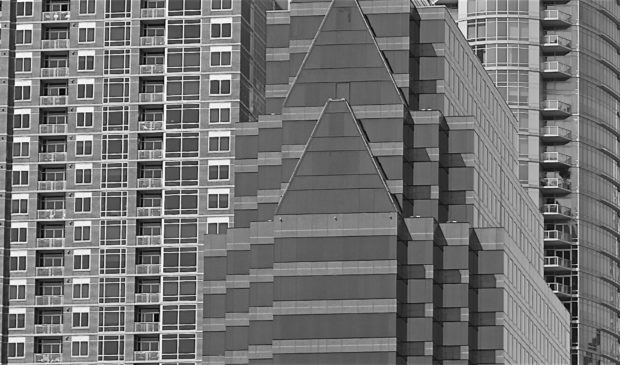Newsletter Signup
The Austin Monitor thanks its sponsors. Become one.
Most Popular Stories
- Latest State of Downtown report shows the city core’s businesses and housing are in transition
- Cap Metro to shelve 46 new electric buses for a year after manufacturer bankruptcy
- Jesús Garza disputes allegation that he violated city ethics rule
- Mobility Committee hears public concern regarding expansion of MoPac
- Council gives first reading OK to major development on tiny slice of land
-
Discover News By District

New report dives into the details of housing in Austin
Monday, June 6, 2022 by Jonathan Lee
HousingWorks Austin has released its latest annual report on Austin’s housing market and supply of affordable housing, underscoring not only the drastic increases in home prices and rents many have experienced but also disparities in affordable housing supply across the city.
“The high cost of housing and short supply of affordable housing in certain parts of the city make it very difficult for many households to have the ability to choose to live in all parts of Austin,” Nora Linares-Moeller, executive director of HousingWorks, said in a press release.
The nonprofit’s market analysis shows that housing prices for both renters and homeowners have outpaced income growth. From 2020 to 2021, the median home sale price increased 26 percent from $424,900 to $536,311, and over the same period, average monthly rent increased by $359 to $1,658 – a 27 percent jump. Meanwhile, median family income grew by 12 percent, less than half of the growth rate of housing costs. Nearly every City Council district saw sales prices rise by at least 26 percent and rents increase by at least 15 percent.
The report also illustrates, with the help of an interactive map, the distribution of affordable housing across the city. New for this year, the report includes not only existing affordable housing but affordable units in development.
A key takeaway is that affordable housing continues to be unevenly distributed across the city, especially when comparing East and West Austin. The report notes that districts 6, 8 and 10, which are mostly west of MoPac Expressway and are among the most expensive districts, contain less than 6 percent of the city’s total subsidized affordable units. In comparison, districts 1, 2 and 3, which are mostly east of Interstate 35 and are less wealthy, contain 58 percent of the city’s subsidized housing.
“These findings not only suggest that the city needs more affordable housing across the city, but also emphasize the lack of affordable and accessible housing for low- and moderate-income households in high-cost areas of Austin, primarily west of MoPac Expressway,” said Woody Rogers, research manager at HousingWorks.
Districts 1 and 2 have seen the most progress in creating affordable housing. Between 2020 and 2021, District 1 added 2,120 subsidized affordable units, more than any other district. District 2 has the most units in the pipeline, with 4,995 units in various stages of planning.
The report also shows which affordable units are near public transit – a data point that again shows disparities across districts. Seventy-three percent of affordable units in District 9 are within a 5-minute walk of bus or rail, while no affordable units in District 6 are within a five-minute walk.
In the past, the report has included a count of people experiencing homelessness, but this was postponed due to the pandemic. Instead, the nonprofit provided data on parts of the city where people are losing their homes. The majority of people experiencing homelessness (65 percent) last lived in districts 1, 2, 3 and 4, indicating that residents in these areas may be the most at risk of becoming homeless.
While acknowledging the city’s progress toward reaching its affordable housing goals, the nonprofit called on local leaders to take further action.
“To ensure that any Austin household is able to comfortably afford their home and feel they have a choice in where they can live, the city must be proactive in advancing efforts to increase the supply of affordable and accessible housing for all incomes and in all parts of the city,” Linares-Moeller wrote in the report.
Photo made available through a Creative Commons license.
The Austin Monitor’s work is made possible by donations from the community. Though our reporting covers donors from time to time, we are careful to keep business and editorial efforts separate while maintaining transparency. A complete list of donors is available here, and our code of ethics is explained here.
You're a community leader
And we’re honored you look to us for serious, in-depth news. You know a strong community needs local and dedicated watchdog reporting. We’re here for you and that won’t change. Now will you take the powerful next step and support our nonprofit news organization?








